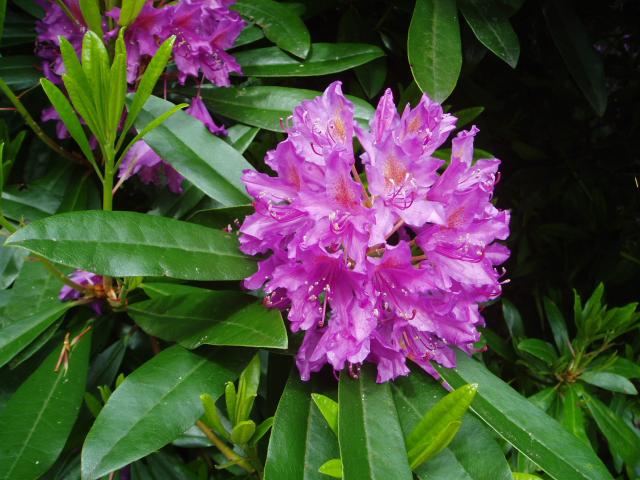We've been having a lot of tree conversations lately. My daughter is determined to get several planted this fall, and I would love to add something else to my grove of serviceberry in the front. What we are learning is that autumn is an excellent time to plant many, but not all, trees and shrubs. Knowing which species to plant, when to plant them and how to take care of them can help ensure fall landscaping success.
A plant’s growth pattern, especially how its roots develop, is a major piece of the planting puzzle. Root systems have several purposes:
- They anchor and support plants in the soil.
- They absorb water and nutrients from the soil to feed the plant.
- They store nutrients for later absorption.
- In some cases, they are essential to plant reproduction.
Iowa State University, a leader in the field of horticulture, divides the roots of deciduous and evergreen trees into the two basic categories of woody and non woody. Woody roots are the large, primarily horizontal roots that form near the tree’s root collar. Although their main purpose is to anchor the tree, they also supply it with some water and other nutrients. Originally, they are found between 8 and 12 inches below ground, but as the tree grows, these roots may become exposed. Woody roots extend well beyond the drip line of the tree, in some cases as far as 7 times the drip line.
Non woody roots are the roots found in the upper levels of the soil, usually the first 4 to 6 inches. The main function of these fibrous feeder roots is to supply water and essential nutrients to the tree and to store carbohydrates which are necessary for drought tolerance. They also extend beyond the drip line of the tree.
Some varieties of trees, maple and ash, for example, tend to always have a fibrous root system, while others, oaks, walnuts and spruce, have tap roots when young. Favorable soil conditions in the first few years of growth may encourage tap roots to extend downward, but eventually a tap root becomes less recognizable as the root system expands outward. Contrary to the common misconception, a tree’s root system is much more horizontal than vertical. Healthy trees have over 50% of their root systems in the top six inches of soil (ISU Forestry Extension), which explains why massive trees can be felled by windstorms.
Another piece of the planting puzzle revolves around the environmental conditions into which the fall planted tree (or shrub) will be placed. Soil type, access to oxygen, soil and air temperatures and availability of moisture are all factors in success or failure. Clay soils will restrict root growth as well as access to oxygen. Sandy soils will encourage horizontal growth, but the roots will be less fibrous and thus less able to pull in moisture and nutrients. Too much mulch will draw roots too close to the surface putting the tree at risk during dry spells.
Fall soil and air temperatures can lend themselves to planting success. Newly planted trees and shrubs often dislike the protracted, intense day and night heat and dry winds of summer. They struggle to produce enough energy to develop roots and support foliage at the same time. Fall in the midwest tends to have temperate days, cool but not cold nights and moderate rainfall, all of which combine to produce an almost perfect climate for planting. Even though the tree top is going into dormancy, the root system continues to rapidly expand and develop until frigid weather arrives.. (Horticultural research shows that trees and shrubs are capable of root growth in soil temperatures as low as 45 degrees F.)
A final piece to the puzzle of fall planting tends to be the species itself. Some plants simply prefer spring over fall planting. Although no definite reason has been determined, horticulturists at Iowa State speculate that planting success may be tied to the plant’s type of root system. According to them, “plants with shallow, fibrous roots can usually be planted with greater ease than those with fewer, larger roots.” Magnolias and tulip trees have large roots and are difficult to plant in the fall. Another theory says that some species are unable to take up adequate water until new roots systems are formed. Fall planting does not allow enough time for that to happen. Bur oaks and willows fall into this category.
Regardless of the reason, birch, sweet gum, bald cypress, fir and some varieties of oaks are among those varieties that are slow to establish and are more successfully installed in the spring. Narrow-leaved evergreens like yews and hemlock are recommended for spring planting, as are the broad-leaved evergreens rhododendrons, azaleas and boxwood.
Like so many other professions, the field of horticulture is constantly evolving. Working with trained horticulturists and designers, like those at Embassy Landscape Group, can save you the frustration and expense of a failing landscape and give you the satisfaction of creating your own personal, signature landscape.










